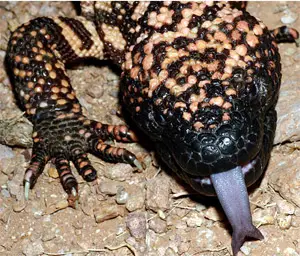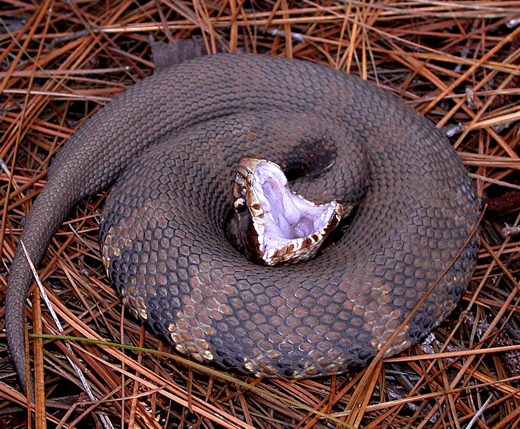Coral Snake
Most notable among their characteristics is the yellow, red, and black banding. Several species that are non-venomous have similar coloration, the only difference being the order of the colors.
This has spawned many useful rhymes, such as “Red to yellow kills a fellow, red to black, venom lack.”
This only applies to species found in the south and eastern U.S. However, In other parts of the world coral snakes may have black bands that touch the red, only black and red banding, or even none at all.

Texas Coral Snake
Coral snakes are quite small, the North American species usually reach only a length of around 24 inches, an in a rare case it is not unheard of for them to reach 35 inches. South American species grow much larger.
As opposed to many venomous snakes, these are quite thin bodied, with the head being roughly the same width as the body. They have small eyes, and a blunt, rounded nose, some aquatic members of this family have flattened tails to act as a rudder when swimming.
These snakes vary widely in behaviour, but most are very solitary, and spend much of their time buried in the ground or in the dense leaf debris of the rainforest floor.
Typically they surface only when feeding, during mating season, or heavy rains. In the case of the aquatic species, they spend much of the time in dense overgrowth that is typical of slow moving bodies of water.
Unlike vipers, which prefer to bite, and let go immediately, coral snakes tend to bite and hold on to the victim because of the amount of time it takes the venom to take effect.

Coral Snake
This may be in part because of the relatively small size of the fangs. Because of the relatively small size, bites are frequently not very effective, and won’t penetrate shoes, or any thicker than normal clothing.
As these snakes are not at all aggressive, most bites occur because of accidental contact, such as touching a snake during a normal activity like working in the garden.
However, a bite is quite serious because these snakes are very venomous; in fact they are the only relative of the King Cobra currently found in the “New World”.
The venom is a neurotixin, and is capable of killing an adult human, but since the antivenin became available to the public, no deaths from a coral snake have been reported, before this time, it was estimated that the fatality rate was around 10%.
Find out more about the Coral Snake over at Wikipedia »


